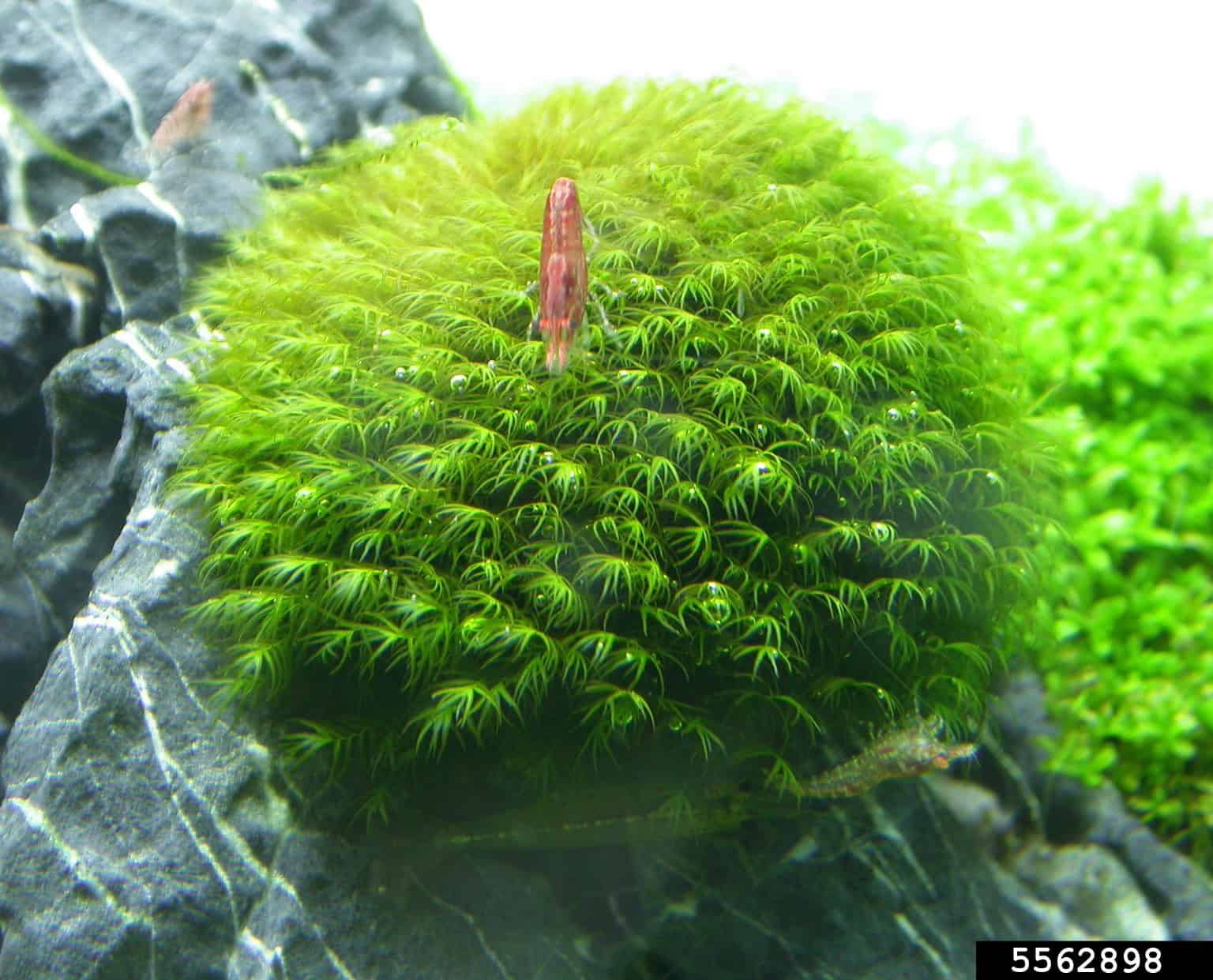Fissidens Nobilis vs Fissidens Fontanus: A Comparison
When it comes to aquatic plants, Fissidens Nobilis and Fissidens Fontanus are two popular choices among aquarium enthusiasts. Both plants belong to the Fissidens genus and are known for their unique appearance and ability to thrive in aquatic environments. In this article, we will compare Fissidens Nobilis and Fissidens Fontanus in terms of their appearance, care requirements, and suitability for different aquarium setups.
Appearance
Fissidens Nobilis, also known as “Noble Fissidens,” is characterized by its delicate and intricate branching structures. The leaves of this plant are small and fan-shaped, forming dense clusters that resemble miniature ferns. The color of Fissidens Nobilis ranges from dark green to brownish-green, adding a touch of natural beauty to any aquarium.
On the other hand, Fissidens Fontanus, commonly known as “Phoenix Moss,” features a more robust and vibrant appearance. Its leaves are larger and broader compared to Fissidens Nobilis, and they have a distinctive feather-like shape. The color of Fissidens Fontanus is a vibrant green, which can create a striking contrast against other plants or decorations in the aquarium.
One of the key differences between Fissidens Nobilis and Fissidens Fontanus lies in their appearance. Fissidens Nobilis, also known as the “Noble Fissidens,” features delicate, feathery leaves that form dense clusters. The leaves are typically light green in color and have a fine texture, giving the plant a soft and elegant look.
On the other hand, Fissidens Fontanus, commonly known as the “Phoenix Moss,” has broader and more robust leaves compared to Fissidens Nobilis. The leaves of Fissidens Fontanus are darker green in color and have a distinct feather-like pattern, resembling the wings of a phoenix, hence the name.
Both plants can add a beautiful touch to any aquascape, but the choice between Fissidens Nobilis and Fissidens Fontanus ultimately depends on the desired aesthetic and overall theme of the aquarium.
When it comes to aquascaping, the appearance of the plants plays a crucial role in creating a visually appealing and harmonious underwater landscape. Fissidens Nobilis, with its delicate and feathery leaves, brings a sense of grace and elegance to the aquarium. The light green color of the leaves adds a refreshing touch, creating a vibrant and lively atmosphere.
On the other hand, Fissidens Fontanus offers a different aesthetic with its broader and more robust leaves. The darker green color gives the plant a more mature and sophisticated look, adding depth and richness to the aquascape. The distinct feather-like pattern on the leaves adds a unique texture, making Fissidens Fontanus a focal point in the aquarium.
When deciding between Fissidens Nobilis and Fissidens Fontanus, it is important to consider the overall theme and style of the aquascape. If you are aiming for a soft and delicate look, Fissidens Nobilis would be a perfect choice. Its fine texture and light green color will complement a peaceful and serene underwater landscape.
On the other hand, if you prefer a more bold and dramatic aquascape, Fissidens Fontanus would be an ideal option. Its darker green color and distinct pattern will create a striking contrast against other plants and decorations, adding a sense of depth and dimension to the aquarium.
Care Requirements
When it comes to care requirements, Fissidens Nobilis and Fissidens Fontanus have similar needs, making them relatively easy to maintain. Here are some key care considerations for both plants:
Lighting
Both Fissidens Nobilis and Fissidens Fontanus thrive in moderate to high lighting conditions. Adequate lighting is essential for the plants to photosynthesize and grow. It is recommended to provide them with around 2-3 watts per gallon of light for optimal growth.
Water Parameters
Both plants prefer slightly acidic to neutral water with a pH range of 6.0-7.5. They can tolerate a wide range of water hardness, but a moderate level of hardness is generally preferred. It is important to maintain stable water parameters to ensure the health and growth of these plants.
Temperature
Fissidens Nobilis and Fissidens Fontanus can thrive in a wide temperature range, typically between 68-82°F (20-28°C). However, they prefer slightly cooler temperatures in the range of 72-78°F (22-26°C).
Substrate and Water Flow
Both plants prefer a nutrient-rich substrate to anchor their rhizoids and promote healthy growth. A fine-grained substrate, such as aquasoil or a mixture of sand and small-sized gravel, is suitable for Fissidens Nobilis and Fissidens Fontanus.
In terms of water flow, Fissidens Nobilis and Fissidens Fontanus prefer moderate water movement. It is important to avoid strong currents that can uproot or damage the delicate leaves of these plants.
Additionally, it is recommended to provide these plants with adequate water circulation to prevent the buildup of debris and ensure the efficient delivery of nutrients. This can be achieved by using a gentle water pump or a strategically placed filter outlet to create a gentle flow throughout the tank.
Furthermore, regular water changes are essential for maintaining the water quality and overall health of the aquarium. It is recommended to perform weekly or bi-weekly water changes of around 20-30% to remove accumulated waste and replenish essential nutrients.
Lastly, it is important to monitor the water temperature and make adjustments if necessary. Fluctuations in temperature can stress the plants and impact their growth. Using a reliable aquarium heater and thermometer can help maintain a stable temperature within the preferred range for Fissidens Nobilis and Fissidens Fontanus.
Suitability for Different Aquarium Setups
Both Fissidens Nobilis and Fissidens Fontanus can be versatile additions to various aquarium setups. Here are some considerations for their suitability in different setups:
Aquascapes
Due to their unique appearance and ability to form dense clusters, both Fissidens Nobilis and Fissidens Fontanus are popular choices for aquascapes. They can be used to create lush foregrounds or to add texture and depth to hardscapes. Their delicate leaves provide a natural and serene look to the overall aquascape.
Shrimp Tanks
Both Fissidens Nobilis and Fissidens Fontanus are excellent choices for shrimp tanks. The dense clusters of their leaves provide hiding places and grazing surfaces for shrimp, creating a natural and enriching environment for them. The plants also help maintain water quality by absorbing excess nutrients.
Terrariums and Paludariums
While Fissidens Nobilis and Fissidens Fontanus are primarily aquatic plants, they can also thrive in terrariums and paludariums. These setups mimic the natural habitat of the plants, with a combination of land and water areas. The plants can be attached to rocks or driftwood in the terrestrial section, with their rhizoids submerged in the water.
Planted Community Tanks
In addition to aquascapes, shrimp tanks, terrariums, and paludariums, Fissidens Nobilis and Fissidens Fontanus can also be suitable for planted community tanks. These tanks are home to a variety of fish species and other aquatic organisms. The dense clusters of the plants provide hiding places and shelter for small fish, while also adding visual interest to the tank. The plants can be placed in the background or midground, depending on the overall layout of the tank.
When choosing Fissidens Nobilis or Fissidens Fontanus for a planted community tank, it is important to consider the compatibility of the plants with the other inhabitants. Some fish species may nibble on the delicate leaves of the plants, so it is advisable to research and choose fish that are known to be plant-friendly. Additionally, proper lighting and nutrient supplementation may be necessary to ensure the healthy growth of the plants in a planted community tank.
Overall, Fissidens Nobilis and Fissidens Fontanus are versatile plants that can thrive in various aquarium setups. Their unique appearance, ability to form dense clusters, and compatibility with different aquatic environments make them popular choices among aquarists. Whether you are creating a serene aquascape, a shrimp tank, a terrarium, a paludarium, or a planted community tank, these plants can add beauty, functionality, and natural balance to your aquarium.

